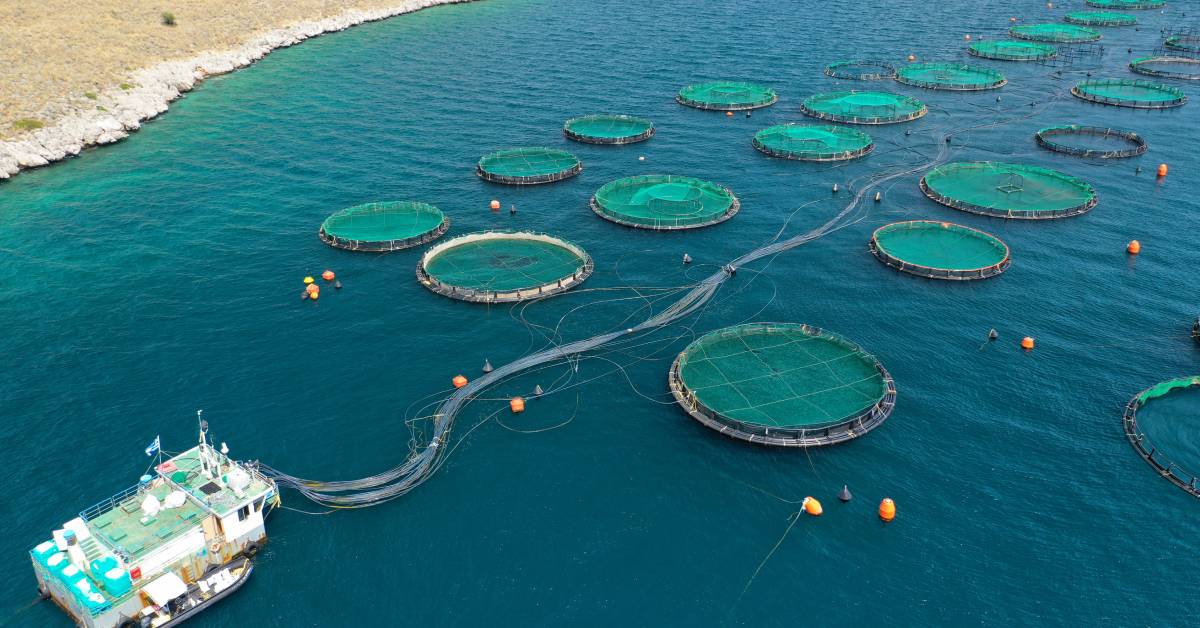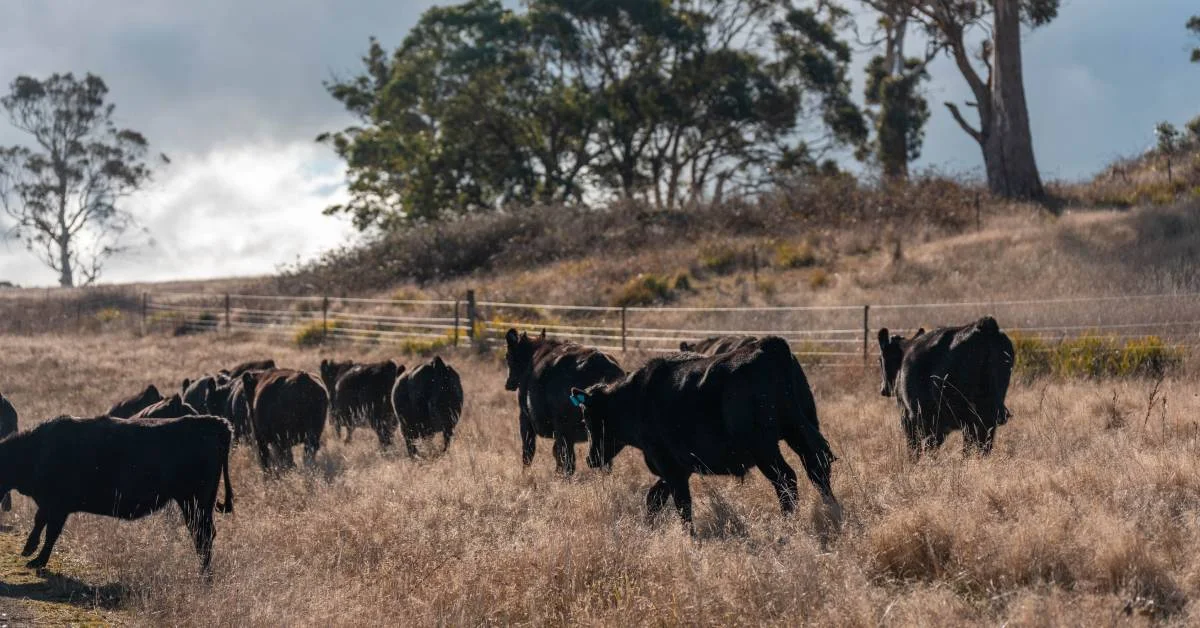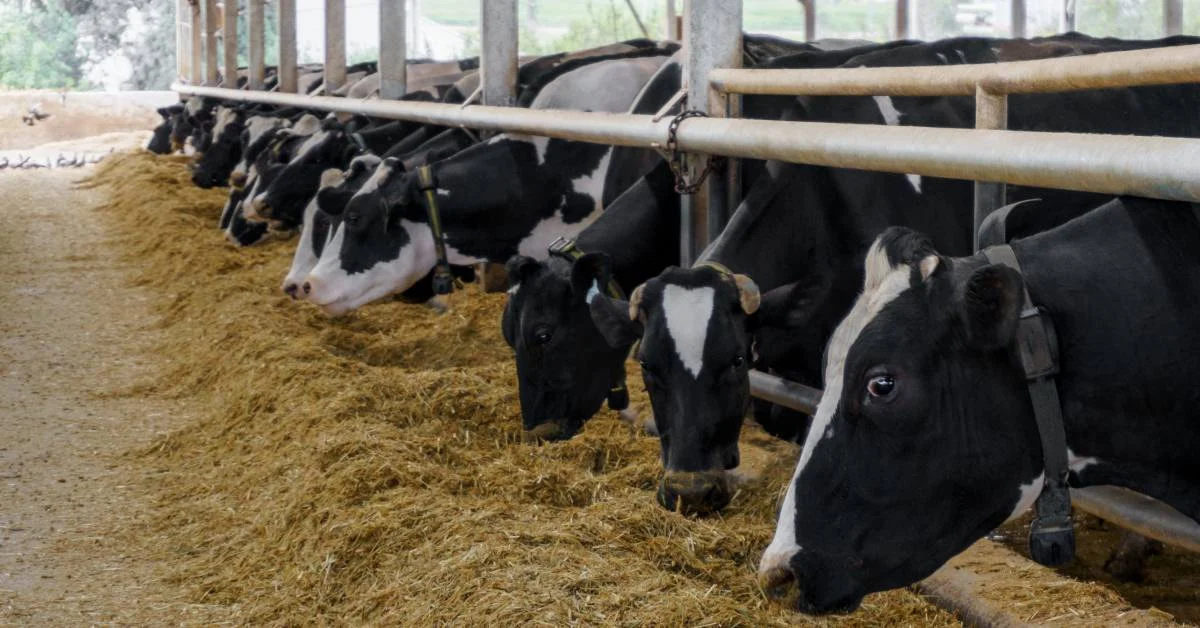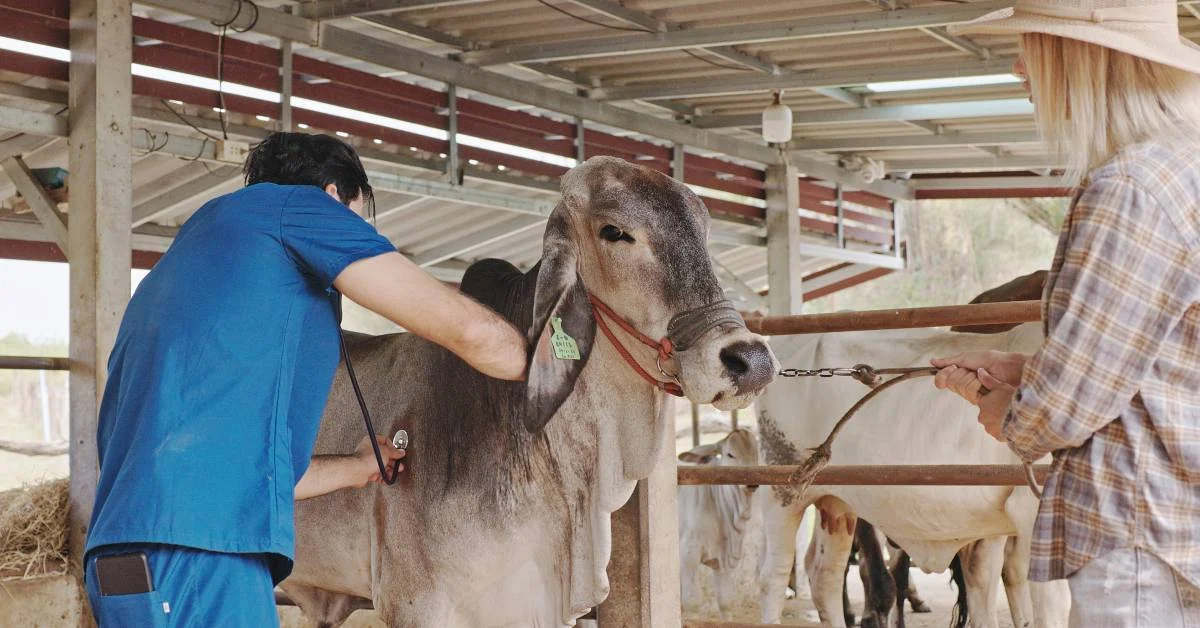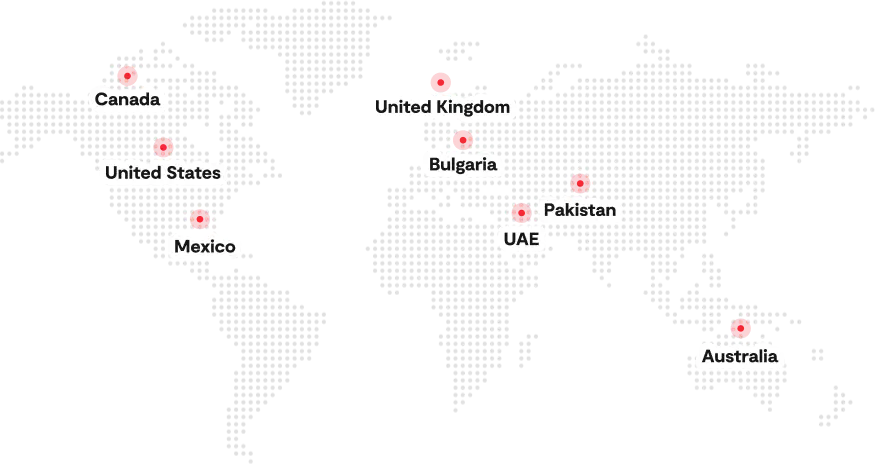Aquaculture is changing the way the world gets its seafood. It’s no longer just fish farming. It’s a fast-growing industry that feeds millions, protects ocean ecosystems, and drives new innovation in food production. With wild fish stocks shrinking and global demand rising, aquaculture is stepping up. According to Precedence Research, the global aquaculture market is worth USD 250.10 billion in 2025. By 2033, it’s expected to reach USD 355.66 billion, growing at a steady CAGR of 4.47%. That kind of growth doesn’t happen by chance. It’s powered by smart, efficient, and sustainable aquaculture technologies.
From smart sensors and AI feeders to recirculating water systems and real-time data, these tools are changing the game. They help farmers raise more fish with less waste, cut costs, and protect animal health. In this blog, we’ll walk through the top aquaculture technologies that are transforming modern farming. Whether you run a small hatchery or a large industrial aquaculture facility, these innovations are helping answer the big question: what is aquaculture today, and where is it headed next?
The Rise of Modern Aquaculture Farming Technology
For as long as humans have farmed the sea, methods have been simple: nets, cages, ponds. But in recent decades, a revolution has taken hold. Aquaculture technologies now include precision sensors, robotics, and integrated software. These innovations are stepping stones toward smarter and more responsible farming.
Large-scale producers are leveraging industrial aquaculture systems in closed environments that allow complete control over conditions. According to the Food and Agriculture Organization, the global aquaculture production hit a record 130.9 million tonnes, surpassing wild-caught fish for the first time with a farm-gate value of USD 312.8 billion.
Aquaculture farming technology helps reduce dependency on wild stocks and ensures food safety from farm to fork. Whether your goal is scaling production or cutting costs, adopting these systems is no longer futuristic; it’s good business. Let’s have a look at the technologies driving this shift.
Key Aquaculture Technologies Transforming Fish Farming
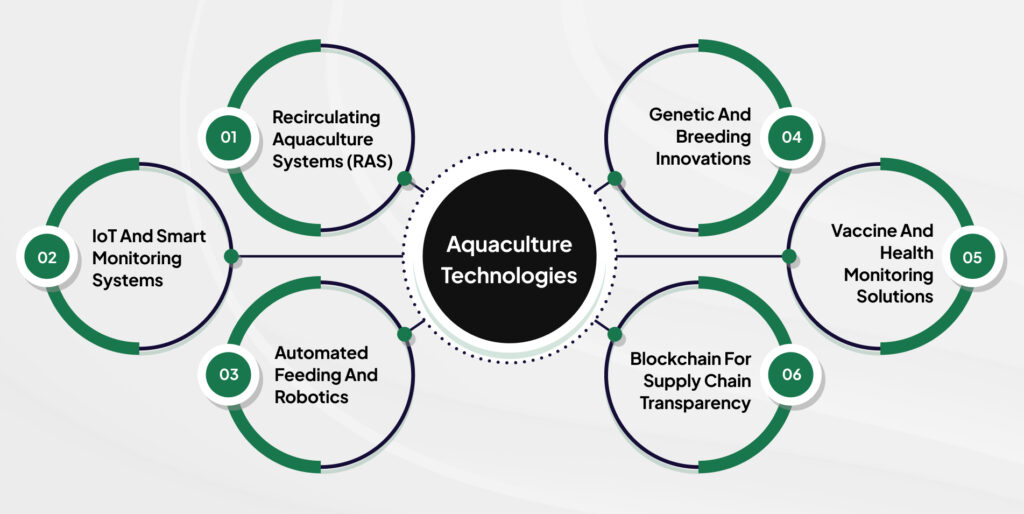
Recirculating Aquaculture Systems (RAS)
Recirculating aquaculture systems (RAS) are changing land-based farming practices. These closed-loop setups reuse water while filtering waste using biological and mechanical systems. They offer multiple benefits:
- Efficiency: Reusing up to 99% of water lowers costs and environmental impact.
- Biosecurity: Disease risks drop with controlled water intake and filtration.
- Scalability: Modular design allows farms to expand as needed.
Technical systems like UV and ozone disinfection, along with biofilters, remove pathogens and ammonia. RAS is at the heart of high-density industrial aquaculture, ensuring that farms can produce more with fewer inputs.
IoT and Smart Monitoring Systems
Real-time monitoring through IoT sensors is evolving agricultural technology. Sensors monitor key metrics like oxygen, temperature, pH, salinity, and ammonia. Data streams from pens or tanks are sent to dashboards or apps for easy alerts and analysis.
These systems help predict disease outbreaks and feed wastage, strengthening livestock farming through biosecurity. For aquaculture, a sudden drop in oxygen triggers alarms, prompting immediate action. Fish behavior analysis via cameras or motion sensors can signal distress before symptoms even appear. Aquaculture technologies that include predictive analytics reduce mortality and improve efficiency, transforming data into decisions.
Automated Feeding and Robotics
Feeding accounts for up to 70% of operational costs in fish farming. That’s why practices for sustainable fish farming include automated feeders and robotics:
- Precision feeders release small rations at optimal times to limit waste.
- Underwater drones clean nets and inspect tanks, reducing labor and increasing safety.
This combo of robotics and sensors ensures that fish get precisely what they need, no more and no less. Feeding logs and motion data back into control systems to improve efficiency over time.
Genetic and Breeding Innovations
Genetic tools are quietly transforming aquaculture. Selective breeding, hybridization, and genome editing improve growth rates, disease resistance, and stress tolerance. Many operations now rely on distinct strains for different conditions, such as fast-growing tilapia, cold-tolerant salmon, and disease-resistant shrimp. With innovations guided by breeding pipelines, these genetic strategies elevate survival and production.
Vaccine and Health Monitoring Solutions
Healthy stock is profitable stock. Smart aquaculture technologies now include disease tracking and vaccination systems:
- Automated vaccine injectors ensure accurate dosing.
- Health-monitoring software links mortality and treatment logs with temperature and feed data, helping spot outbreaks early.
Solutions like the aquaculture management software by Folio3 Agtech are driving innovation in this area with advanced tools that integrate vaccination, health data, and environmental monitoring into a single intelligent platform. Electronic health records improve compliance and let farms respond faster. And with traceable vaccine records, food safety and regulatory compliance both improve.
Blockchain for Supply Chain Transparency
Blockchain is making its way into aquaculture for a good reason which is traceability. With increasing consumer demand for sustainable and ethically sourced seafood, blockchain adds a layer of trust. From hatchery to harvest, every stage of production is recorded. This ensures that data on feed type, medication use, harvest time, and transport is secure and verifiable. It protects brands, meets regulatory needs, and boosts consumer confidence. In industrial aquaculture, blockchain brings visibility within the seafood supply chain and accountability from farm to fork.
Benefits of Adopting Advanced Aquaculture Technology
Transitioning to modern aquaculture technologies offer more than just a technical upgrade; they transform the entire production cycle from pond to plate. By integrating smarter tools, producers can drastically improve efficiency, reduce risk, and deliver more sustainable outcomes.
Higher Productivity
Advanced systems like recirculating aquaculture systems (RAS) and automated feeders significantly increase output. RAS maintains optimal water conditions around the clock, which promotes faster fish growth and better survival. Automated feeding ensures consistent nutrition delivery, cutting waste while maximizing feed conversion rates. Together, these systems help farms produce more biomass using fewer resources.
Lower Operating Costs
Labor is one of the most significant costs in aquaculture. But with smart sensors, automated feeders, and remote monitoring, farms reduce their dependency on manual checks. Real-time data from IoT systems allows staff to focus on high-value tasks instead of routine inspections. Over time, this efficiency lowers operational costs, including water, energy, and feed expenditures.
Environmental Sustainability
Environmental pressures on the seafood industry are growing. Closed-loop systems like RAS reduce water use by up to 99%, and integrated filtration prevents nutrient runoff into surrounding ecosystems. Smart aquaculture technologies allow producers to meet stricter environmental standards while building long-term resilience. It also reduces dependence on wild fish stocks, supporting biodiversity conservation.
Better Biosecurity
Disease outbreaks can wipe out entire tanks or pens. New health monitoring solutions powered by real-time data make it easier to detect irregularities before they escalate. Tracking temperature, oxygen levels, and fish behavior allows for early intervention. Faster response means fewer antibiotics, less mortality, and reduced spread of pathogens.
Improved Food Safety and Traceability
Modern systems track everything from the origin of fish eggs to feed composition to harvest timing. Blockchain and digital traceability tools give consumers and regulators confidence that products meet safety and sustainability standards. For exporters, this traceability also opens up access to premium markets and certifications. By embracing aquaculture technologies, producers can scale faster, waste less, and deliver higher-quality seafood with fewer risks. The gains are not just technical, they’re financial, operational, and ecological. This is the future of aquaculture, and the benefits are already being realized by farms around the world.
Challenges in Implementing Aquaculture Technologies
While the benefits of modern aquaculture technologies are hard to ignore, implementing them is not without hurdles, especially for small to mid-sized producers. Based on insights from our AgTech experts, the following challenges represent the most critical roadblocks to successful adoption. Understanding these barriers is essential for any operation planning a sustainable and scalable transition to smart aquaculture systems.
High Capital Costs
Most advanced aquaculture technologies demand a sizable upfront investment. Installing recirculating aquaculture systems (RAS), automated feeders, water quality sensors, and data dashboards can cost thousands to millions, depending on scale. This can be a major deterrent for new operators or traditional farms with limited funding. While long-term savings are significant, the initial cost barrier slows the quality control in seafood processing.
Skills and Training Gaps
Technology is only as effective as the people using it. Many aquaculture workers are skilled in fish handling and water management but lack experience with digital tools, analytics platforms, or system calibration. Operating IoT devices or interpreting sensor data requires training. Without proper education, farms risk underutilizing the systems or making costly mistakes. Bridging this skill gap is critical.
Infrastructure Limitations
Some regions where aquaculture thrives lack basic infrastructure. Consistent electricity, internet access, and strong connectivity are essential for real-time monitoring and automation. But remote coastal or rural areas often face outages or weak digital networks. This creates major limitations for implementing cloud-based aquaculture technologies and smart feeding systems. It may also slow real-time response to fish health issues.
Did you know?
According to Wikipedia, about 50% of rural households in the U.S still lack broadband access, compared to 66% of the general population.
Regulatory Barriers
Some technologies push against current regulations. For instance, genetically enhanced fish or selective breeding methods may face scrutiny from health and trade authorities. Water discharge from new systems may need extra compliance checks. Countries differ in how quickly they approve modern systems, creating uncertainty for operators hoping to expand or export. Navigating red tape can delay the benefits of innovation.
Integration Complexity
Most farms adopt technologies in stages, not all at once. However, integrating new systems with existing infrastructure isn’t always smooth. Mismatched software, hardware compatibility issues, or poor data integration can cause downtime and loss of trust in the system. Aquaculture producers need scalable, modular technologies that evolve with their business, not ones that create more problems than they solve.
Despite these hurdles, progress is possible. Farms can overcome barriers with phased adoption, strong vendor partnerships, government support, and investment in training. The key is to start small, measure impact, and scale up strategically. With time and the right strategy, the path to digital transformation in aquaculture becomes much clearer.
Comparing Key Aquaculture Technologies

The right balance among them makes modern farms competitive and compliant.
The Future of Aquaculture Farming Technology
The next wave of aquaculture technology is already taking shape. While today’s systems focus on control and efficiency, tomorrow’s innovations will push boundaries on transparency, sustainability, and automation. With AI-driven insights, clean energy systems, and next-gen breeding tools, the industry is gearing up for smarter, more resilient growth. The following is what is being adapted gradually in the aquaculture farms and will be made a norm in the future to work with:
- AI and machine learning in agriculture will power real-time insights across farms.
- Blockchain traceability will elevate consumer trust in seafood origins.
- CRISPR and gene editing may lead to even more resilient stocks.
- Solar-powered RAS could create energy-independent farms.
- Small-farm democratization via modular IoT and RAS units.
As the industry evolves, the question isn’t if farms will adopt aquaculture technology, it’s how they’ll implement the right tools for their operations. That’s where platforms like Folio3 AgTech Aqua culture management software come in, turning vision into action with powerful, farm-ready solutions.
How Folio3 AgTech Is Advancing Aquaculture Technology
Aquaculture isn’t just about farming anymore, it’s about precision, transparency, and long-term viability, all of which are being redefined by Folio3 AgTech. The aquaculture management software by Folio3 Agtech is built to simplify complex operations, giving fish and shrimp farms complete visibility from hatchery to harvest. Here’s how it’s setting a new standard in aquaculture technology with its advanced set of features:
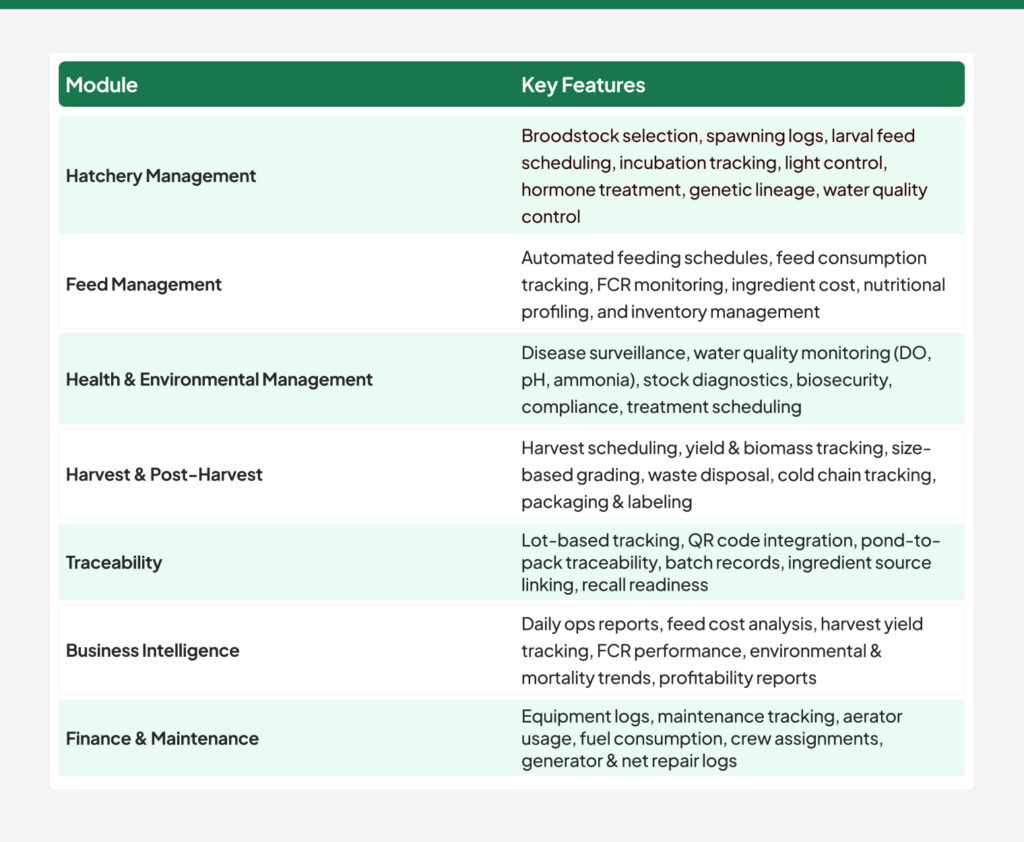
With such comprehensive tools across every stage of aquaculture farming, Folio3 AgTech is helping producers unlock greater efficiency, traceability, and profitability. Whether you’re managing a hatchery, optimizing feed, or improving harvest logistics, this software brings modern aquaculture technology right to your fingertips, setting the stage for smarter, more sustainable growth.
Conclusion
Our oceans and lakes won’t meet tomorrow’s seafood needs alone. With aquaculture technology, farms can close the loop, harvesting abundant, safe, and sustainable seafood. Each innovation like RAS, smart systems and genetics forms a vital building block. These aquaculture technologies unlock better yields, traceability, and lower waste. And as firms scale into industrial aquaculture, modular tech platforms keep options open for all farm sizes.
If you’re in aquaculture farming, now’s the time to act. Assess your current setup, target the most pressing inefficiencies, and seek expert help. Investing in emerging tools doesn’t just boost your farm, it safeguards our planet’s food future.
FAQs
What Technology Is Used In Aquaculture?
Common technologies in Aquaculture include automated feeding systems that reduce waste, water quality sensors to track parameters like oxygen, pH, and ammonia, and recirculating aquaculture systems (RAS) that allow land-based farming with minimal water use. IoT devices and AI tools help monitor fish health, behavior, and growth in real time, while drones and underwater cameras are used for surveillance and biomass estimation. Blockchain-based traceability solutions are also emerging to enhance transparency in the aquaculture supply chain.
What Are The Three Major Areas Of Aquaculture?
The three main areas of aquaculture are freshwater, marine, and brackish water farming. Freshwater aquaculture involves species like tilapia and carp raised in ponds, rivers, or tanks. Marine aquaculture, also known as mariculture, focuses on saltwater species such as salmon, oysters, and seaweed grown in ocean-based systems. Brackish water aquaculture combines fresh and saltwater environments and is commonly used for farming shrimp and certain types of finfish.
What Is The Most Common Production System Used In Global Aquaculture?
Globally, the most widely used aquaculture production system is pond culture. It’s especially prevalent in Asia due to its cost-effectiveness, simplicity, and compatibility with a wide range of species like carp and catfish. While advanced systems like RAS and cage culture are gaining ground, particularly in high-tech and urban settings, pond farming remains the backbone of small-to-mid-scale operations worldwide.
What Are The 4 Different Types Of Aquaculture Farms?
Aquaculture farms generally fall into four main types: pond farms, cage farms, recirculating aquaculture systems (RAS), and integrated multi-trophic aquaculture (IMTA). Pond farms are traditional and common for freshwater fish. Cage farms use floating structures in open water bodies to raise species like salmon. RAS are closed-loop, land-based systems that offer high control over water quality. IMTA farms combine different species such as fish, shellfish, and seaweed in a balanced system that recycles waste and improves sustainability.

